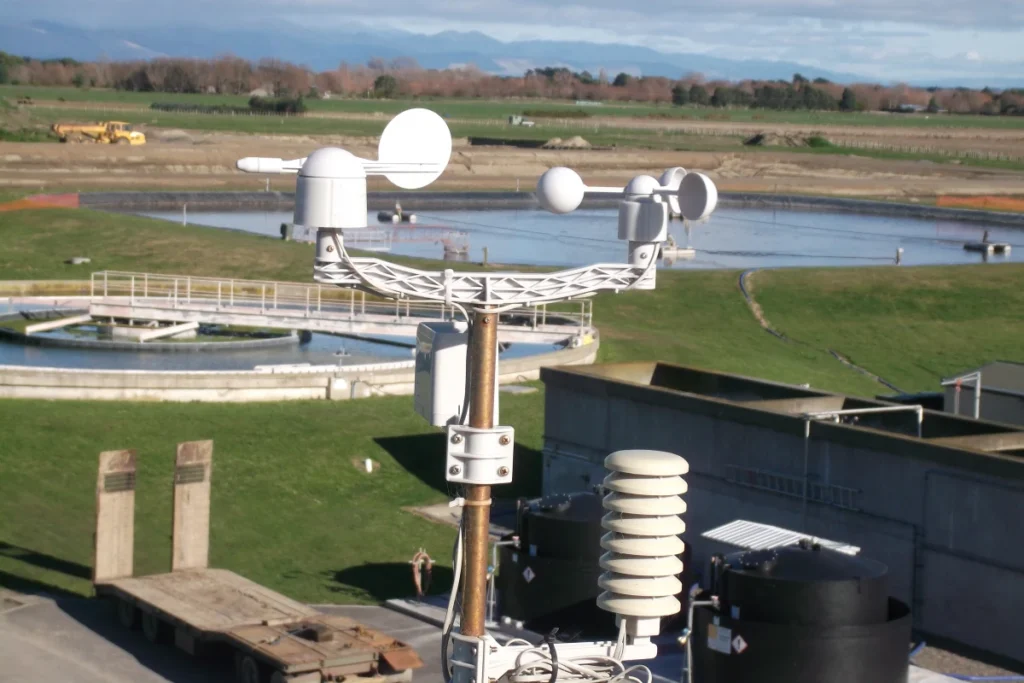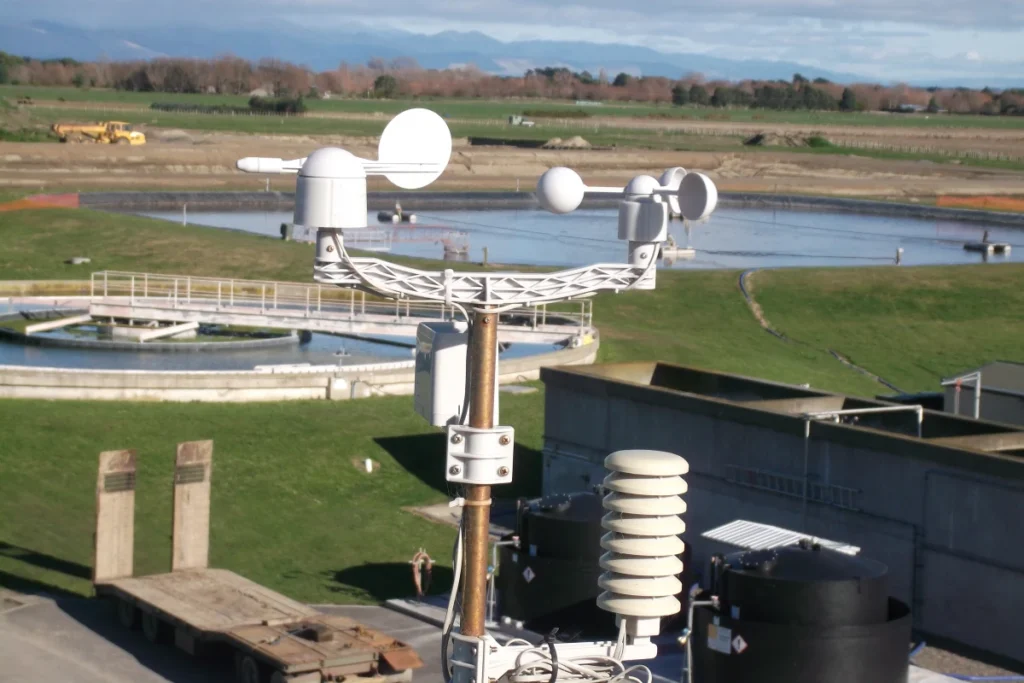
# Definition of Anemometer in Meteorology
An anemometer is a device used in meteorology to measure the speed and direction of wind. It is an essential tool for weather forecasting, climate studies, and various industrial applications. The term “anemometer” is derived from the Greek word “anemos,” meaning wind, and “metron,” meaning measure.
## Types of Anemometers
There are several types of anemometers, each designed for specific purposes and environments. The most common types include:
– Cup Anemometer: This type consists of three or four cups mounted on horizontal arms, which rotate as the wind blows. The speed of rotation is proportional to the wind speed.
– Vane Anemometer: Also known as a windmill anemometer, it uses a propeller or a set of blades to measure wind speed. The vane aligns itself with the wind direction, providing both speed and direction data.
– Hot-Wire Anemometer: This type uses a heated wire or filament. The cooling effect of the wind on the wire is measured to determine wind speed. It is highly sensitive and used in research and laboratory settings.
– Ultrasonic Anemometer: This advanced type uses ultrasonic sound waves to measure wind speed and direction. It is highly accurate and can operate in harsh weather conditions.
## Applications of Anemometers
Anemometers are used in a variety of fields, including:
– Weather Forecasting: Accurate wind measurements are crucial for predicting weather patterns and issuing warnings for severe weather events.
– Aviation: Pilots and air traffic controllers rely on anemometers to ensure safe takeoffs, landings, and flight operations.
– Environmental Monitoring: Anemometers help in studying wind patterns and their impact on ecosystems and air quality.
– Industrial Applications: They are used in industries such as wind energy, where precise wind measurements are necessary for optimizing turbine performance.
## How Anemometers Work
The basic principle behind most anemometers is the conversion of wind energy into mechanical or electrical signals. For example, in a cup anemometer, the wind causes the cups to rotate, and the rotation speed is converted into an electrical signal that can be measured and recorded. Similarly, in a hot-wire anemometer, the cooling effect of the wind on the heated wire changes its electrical resistance, which is then measured to determine wind speed.
## Conclusion
Anemometers play a vital role in meteorology and various other fields by providing accurate measurements of wind speed and direction. Understanding how they work and their different types can help in selecting the right anemometer for specific applications. Whether for weather forecasting, aviation, or environmental monitoring, anemometers are indispensable tools for measuring and understanding wind behavior.
Keyword: define anemometer
